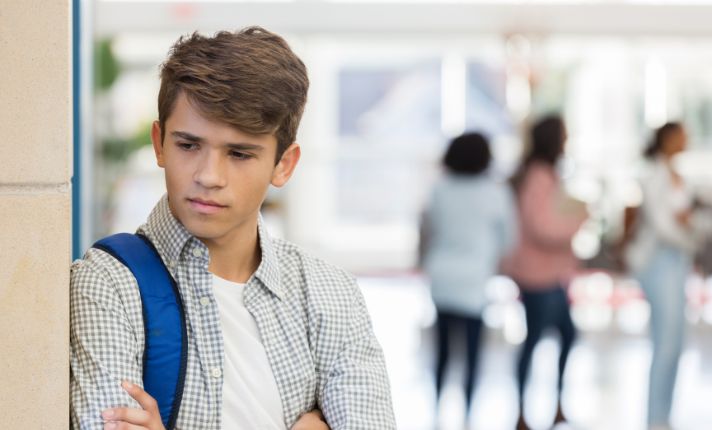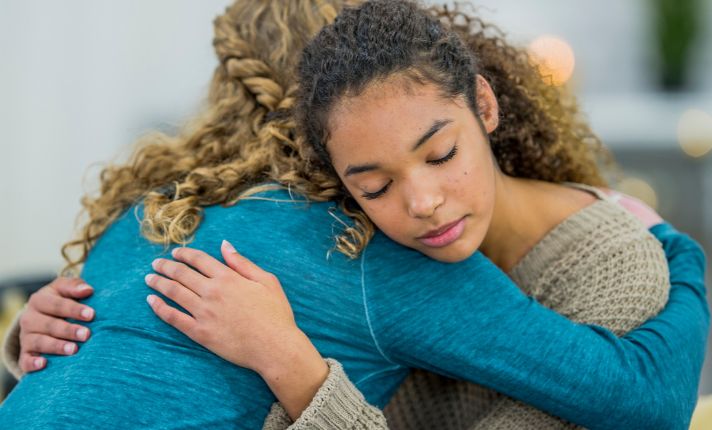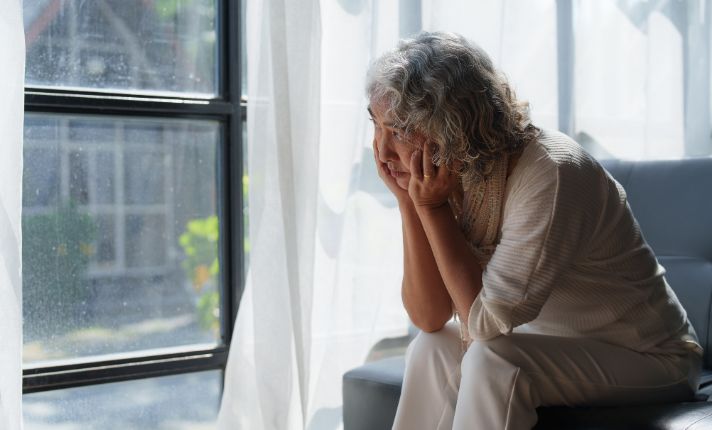Over the past two decades, every U.S. state has felt the impact of rising youth suicide rates. In Utah, the youth suicide rate more than tripled in the years leading up to the COVID-19 pandemic. Today, suicide is the second leading cause of death for kids ages 10 to 17—and only 6 other states have higher suicide rates for this age group.
Our youth deserve every support their communities can offer. One organization, Hope Squad, is lighting the way.
In this post, you’ll learn what Hope Squad is, why peer-led suicide prevention makes a difference, and how your agency, school, or organization can join the movement to save lives.
What is Hope Squad?
After losing one to two students a year to suicide for over a decade, a Provo City School District principal named Dr. Gregory A. Hudnall knew something had to change. At the time, he led a task force of school counselors, community leaders, and mental health professionals. Though well-educated and trained in suicide prevention, Dr. Hudnall quickly realized that for their suicide prevention efforts to truly succeed, they needed to involve the students themselves.
In Utah, many school-aged youth are regularly grappling with suicidal thoughts:
- 22.9% have seriously considered a suicide attempt
- 18.5% have made a suicide plan.
Hope Squad was founded to make sure fewer of these cases end in tragedy. The program trains students — who interact with their peers more often and more directly than most adults — to recognize suicide warning signs and connect their peers with a trusted adult.
Hope Squad’s mission: “To reduce youth suicide through education, awareness, and peer intervention.”
How Hope Squad Works
Hope Squad operates on a simple but powerful idea. Students in distress are more likely to be vulnerable and open up to a peer than an adult, increasing the odds that a chain of support will start amongst peers. Here’s a look at how Hope Squad creates a trusted support system:
- Students nominate peers they trust—those who are kind, good listeners, and easy to talk to—to form their school’s Hope Squad.
- Squad members meet regularly with trained advisors to learn how to recognize signs of emotional distress.
- When they notice a peer struggling, they reach out to connect, listen without judgment, and encourage their peer to check in with a trusted adult.
- Hope Squads also work as a group to educate the entire student body about mental health and reduce stigma.
It’s important to note that Hope Squad members do not act as counselors but serve as a supportive bridge, connecting students with the professional care they need.

Hope Squad’s Impact in Utah
In the first nine years after Hope Squad Utah launched in Provo, there were zero student suicides recorded in the Provo City School District. Since then, the program has expanded to 380 elementary, junior high, and high schools across the state.
Suicide Prevention in Utah: A Community Effort
Programs like Hope Squad have proven one thing clearly: it takes an entire community to spot the signs and prevent youth suicide.
Schools participating in the Hope Squad program are required to collaborate with a local mental health agency or health department. Hope Squad Utah also collaborates with the Utah State Board of Education, the Utah Department of Health and Human Services (DHHS), and local health organizations. These partnerships ensure that students get the comprehensive, professional care they need.
Why Peer-Based Prevention Works
Following a recent school shooting in Rigby, Idaho, school leaders installed technology like anonymous tip apps and keystroke monitoring software to prevent future tragedies. But they quickly realized that technology alone isn’t enough.
Peers were more likely to notice little changes that give clues to a student’s mental state, like eating lunch alone or pulling away from friends or activities. That’s why they decided to launch their own Hope Squad.
Hope Squad’s peer-led model is recognized by the Suicide Prevention Resource Center’s Best Practices Registry, meaning it meets standards for being effective or promising based on research evidence and expert consensus.
So, what makes peer-led prevention effective?
Peer influence is powerful. Just like peer pressure can lead youth into risky behaviors, it can play an equally positive role in kids’ lives, leading them toward connection, empathy, and hope. To put it simply, adolescents care deeply about what their peers think and say. When asking for help becomes the norm, it can transform a school’s culture—and has the power to save lives.

Hope Squad and the Future of Suicide Prevention
As of 2024, Hope Squad was active in 2,000 schools across 47 U.S. states, as well as in Canada, South Korea and Ghana.
Peer-led suicide prevention is spreading because it works—and the more supportive systems we build around it, the stronger it becomes. Hope Squad works because students talk to students. That’s the key, and it’s saving lives.
To learn more about how your school, agency or organization can get involved, visit the Hope Squad website and read about starting a Hope Squad or becoming a Hope Squad partner.
Let's Work Together
Peer-to-peer connection has the power to save lives—and programs like Utah’s Hope Squad are showing just how impactful that power can be.
But even the most dedicated mental health efforts need strong systems in place to succeed.
That’s where AxiomEHR comes in.
AxiomEHR supports behavioral health agencies, school districts, and community partners deliver mental health services efficiently and effectively. From simplifying documentation and billing to improving care coordination and compliance, Axiom gives your team the tools they need to focus more on people and less on paperwork.
Together, we can create safer, more supportive environments for youth across Utah.
Visit our website to learn how AxiomEHR can support your efforts.


